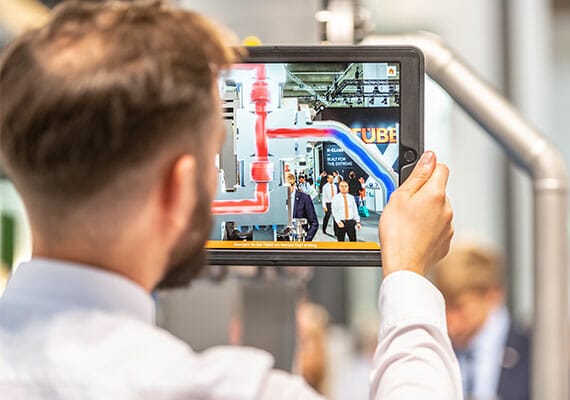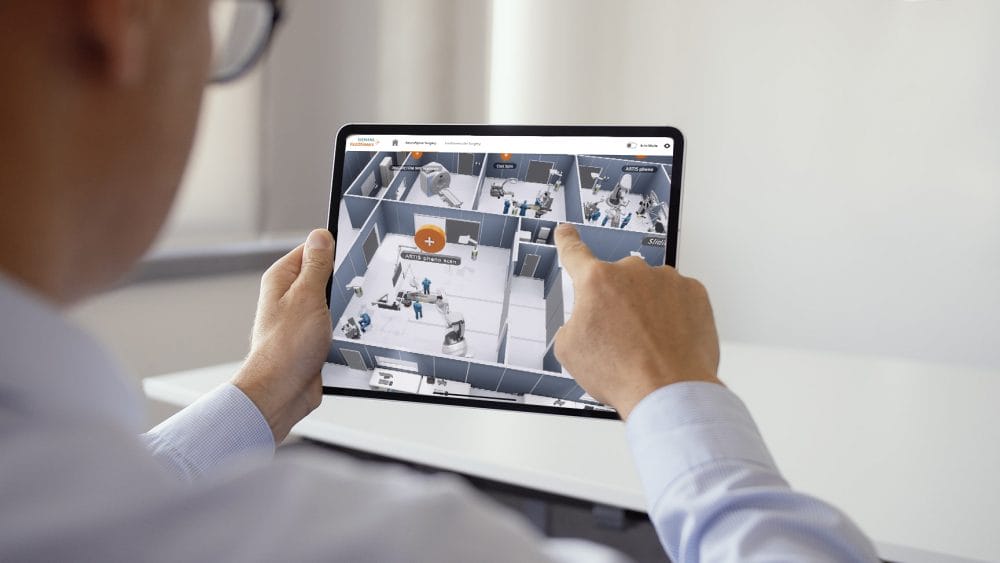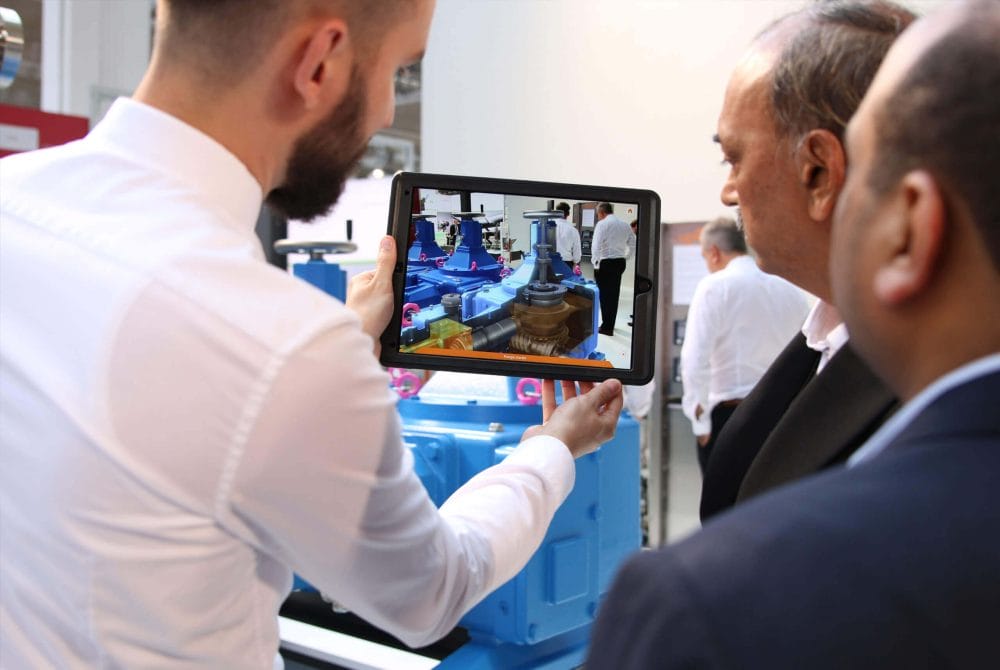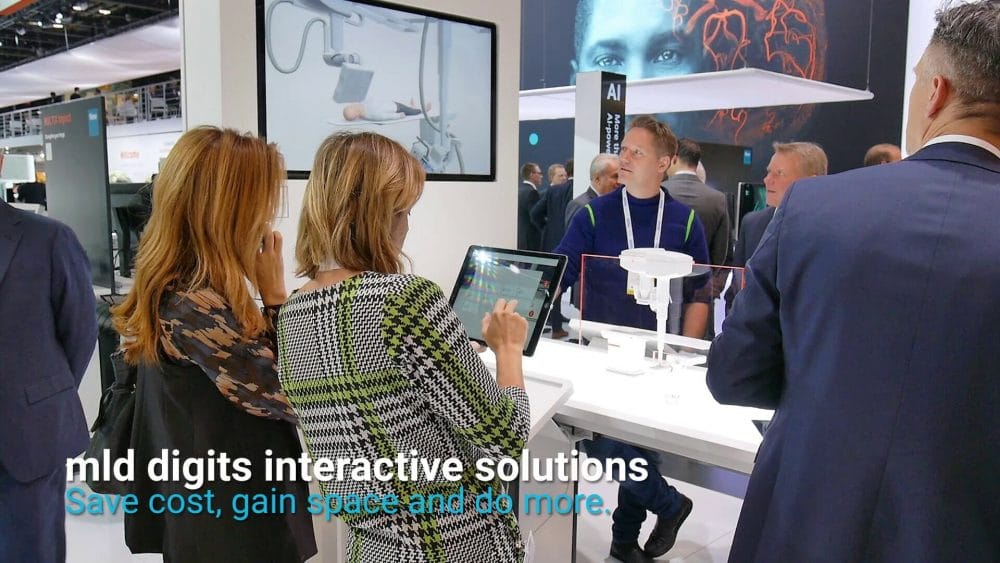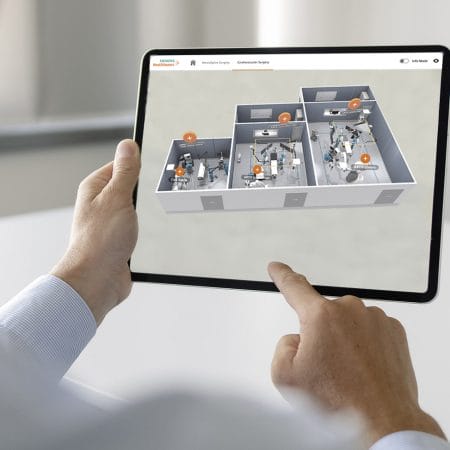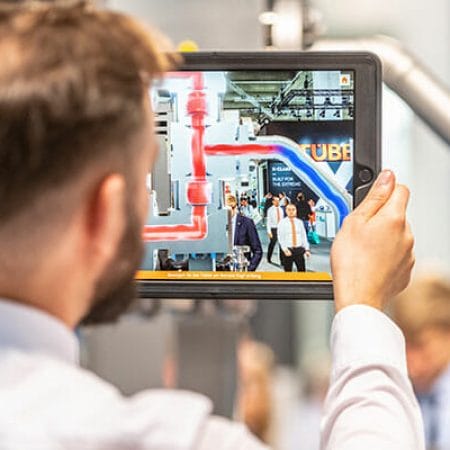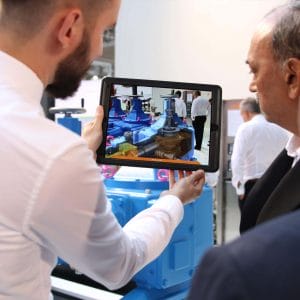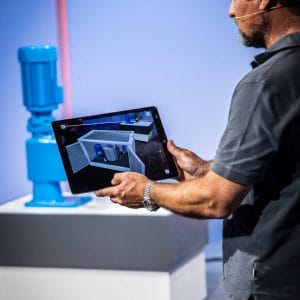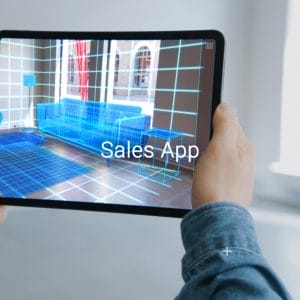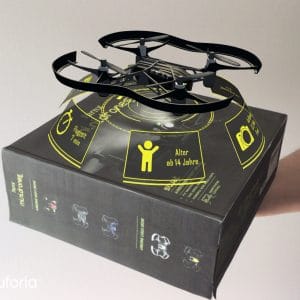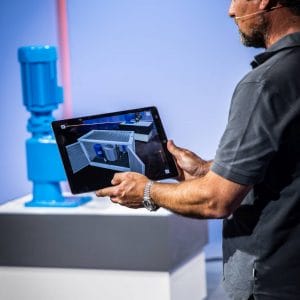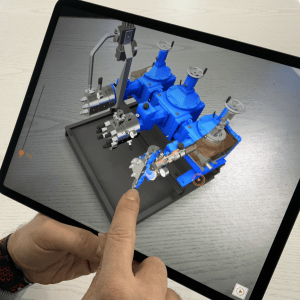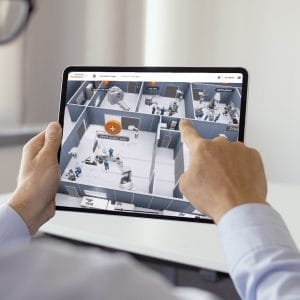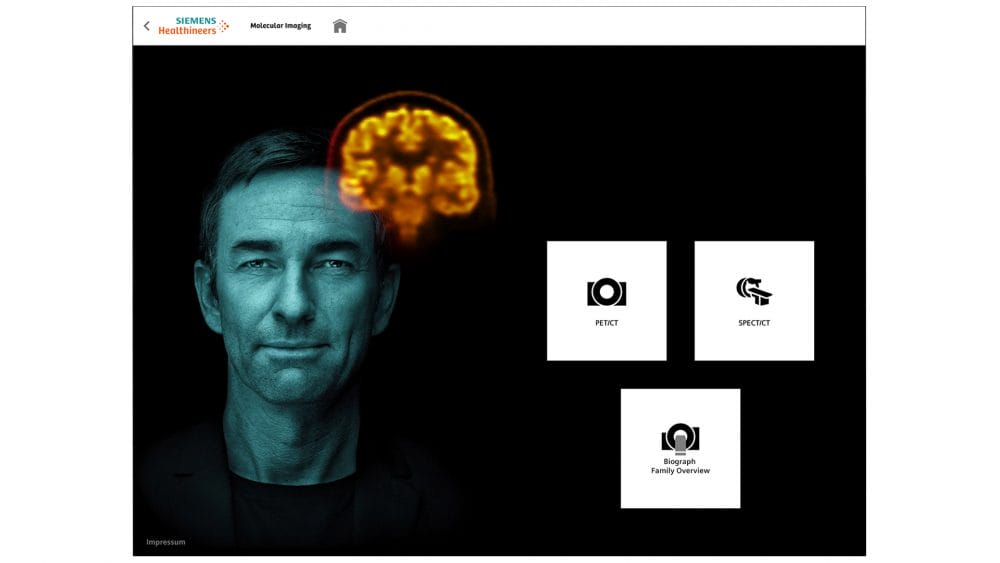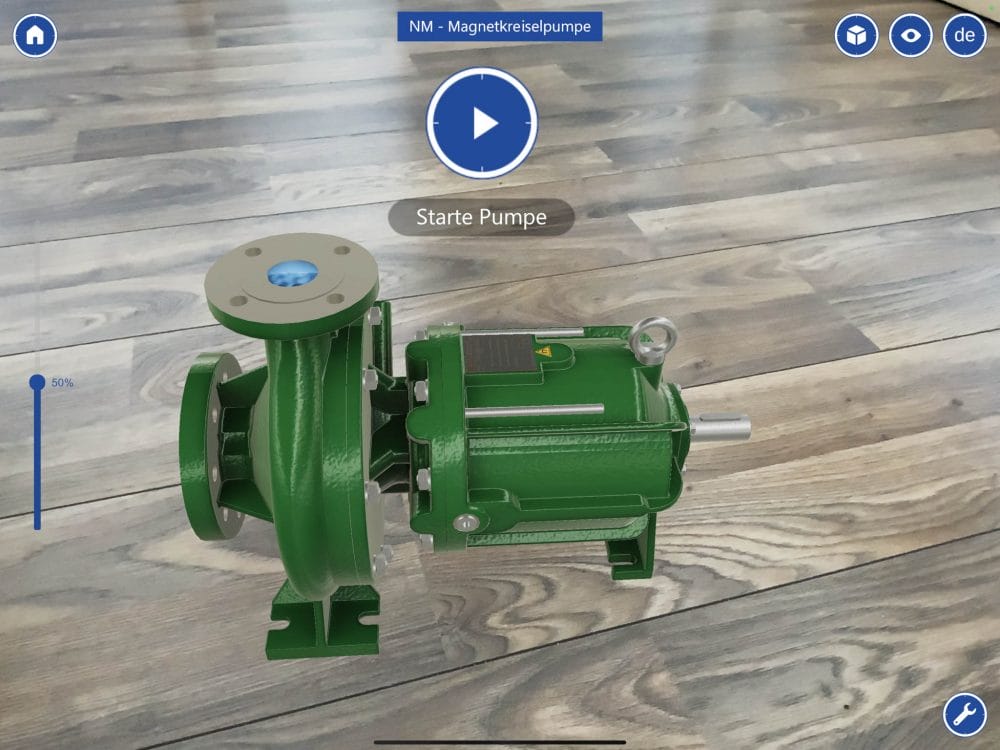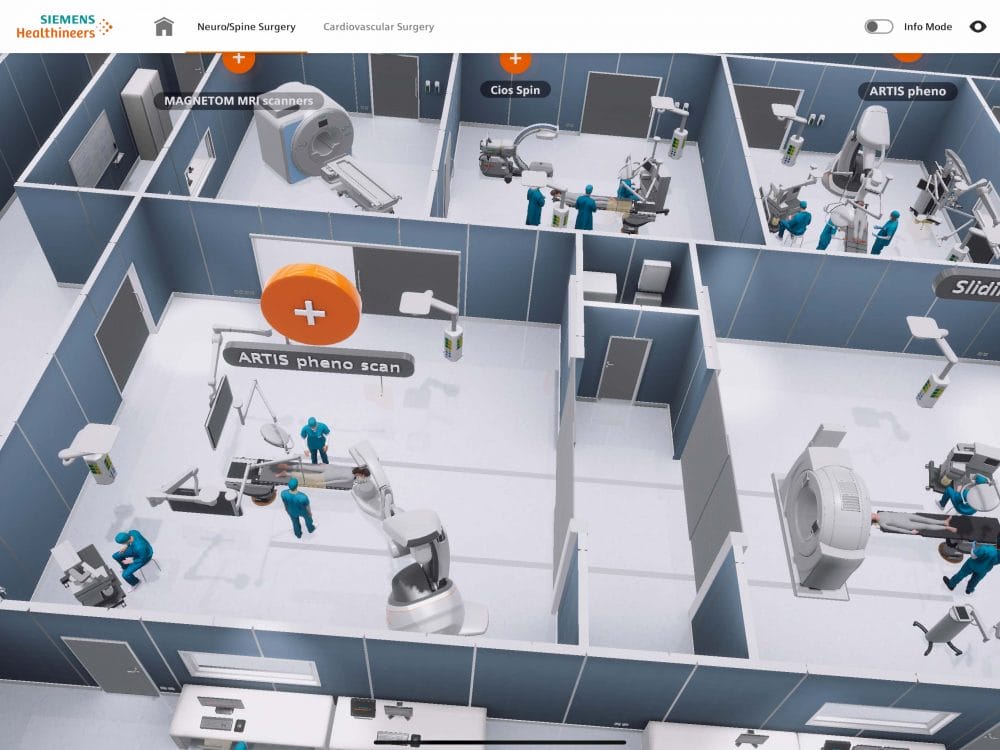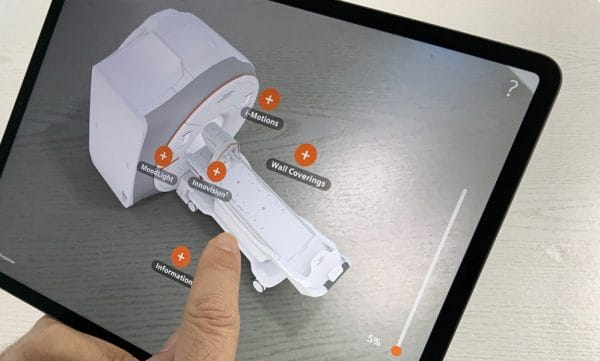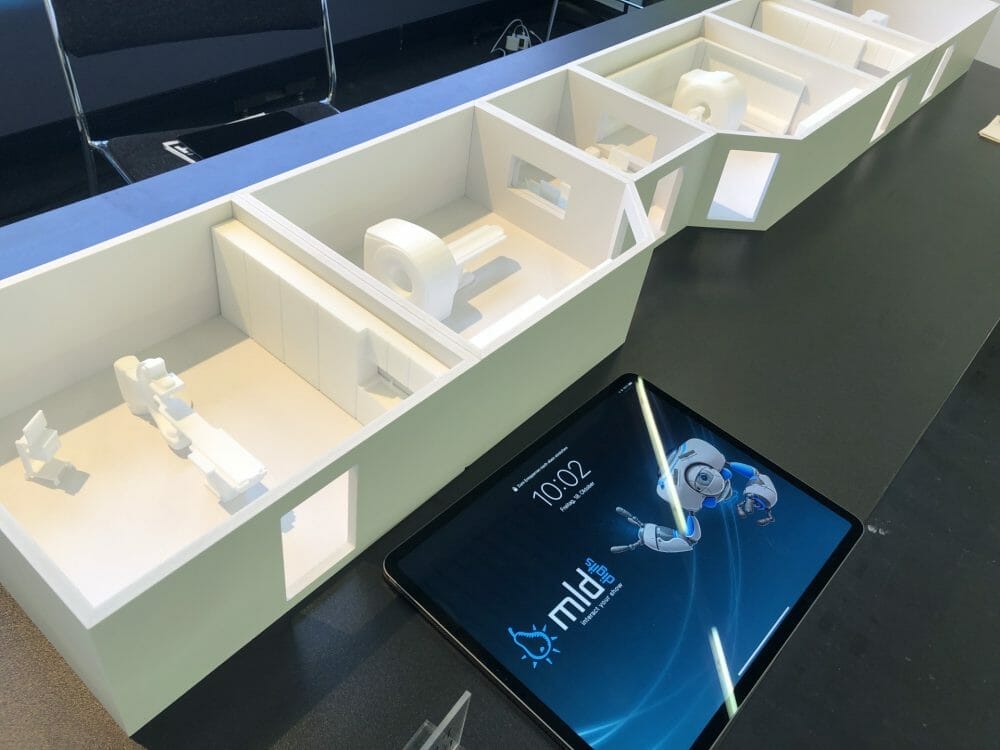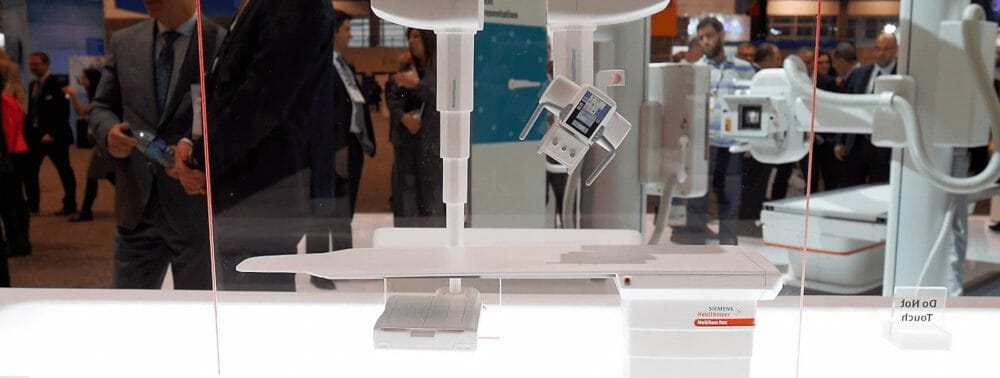How does mld digits support me as an augmented reality provider?
mld digits is the ideal partner when it comes to inspiring product presentations with augmented reality (AR). We work with you in efficient workflows to develop a concept that suits your company and your product range. As an augmented reality provider specialising in AR marketing, we know what is important when it comes to AR solutions for events & co – our references are proof of this.
Get in touch with us!
What is augmented reality (AR)?
Augmented reality – or AR for short – is a technology that has become increasingly widespread in recent years. Its meaning can be described as “extended reality“; reality is to be expanded with virtual components using appropriate technology. AR thus creates a link between true and virtual reality.
With augmented reality, the virtual elements are added in real time – only then is it an AR application. To illustrate this with an example: During sports broadcasts, lines are increasingly being shown on TV to measure distances, such as offside lines in football. As this is in real time, it is augmented reality. The dinosaurs in the Jurassic Park film series are different: although the virtual lizards complement the real landscape, they do not do so in real time, but through digital post-processing.
AR has become a real trend today – especially in the fields of various industries (production and logistics), architecture, construction and retail. The technology is also being used in marketing – especially for commercial events and presentations.
What is AR marketing? How can augmented reality be used at trade fairs and events?
In the digital age, it is no longer enough to simply display flyers or brochures at trade fairs. With AR and the appropriate technology, you can create a unique 3D presentation of your products at important marketing events. With their help, even the most complicated products can be presented in a clear and entertaining way.
Your product, such as a machine, a piece of furniture or a vehicle, is first reconstructed as a 3D object; as true to detail as possible in terms of colour, dimensions or technical details. AR technology can then be used to place it virtually in the respective environment. This allows you to see immediately what it would look like on site. It is also conceivable to show prototypes of systems, machines or other products that were previously only available in virtual form but not yet complete in reality.
With an augmented reality product presentation, you utilise the latest possibilities of digital technology and stand out from the mainstream at trade fairs and events. These are exceptionally flexible applications that can be easily expanded. Lastly, new functions can be integrated at a later date – such as additional machines, animations or 2D information – and all this can be done via an update.
What advantages does augmented reality marketing offer at trade fairs and events?
With augmented reality, you can present a product at events in a playful way – buzzword “gamification“: the multi-sensory approach connects with potential customers in a memorable way, making it highly attractive. In addition, the 3D product presentation is usually used on handheld devices. In other words, the prospective customer has the product in their hand and can view it completely independently.
What’s more: With augmented reality, additional information, images or videos can be displayed – the prospective customer not only has the product right in front of their eyes, but also answers to any questions that may arise when viewing it on site. This means that additional information no longer has to be provided afterwards, but is directly available on demand where it is needed.
Furthermore, with a 3D product presentation, you can inspire your prospective customers – away from a dry information event and towards an experience! Bring even the most complicated products to life with augmented reality and provide simple and entertaining explanations.
Thanks to AR, the product presentation becomes interactive, which increases attention immensely. Whether first-time visitors or potential customers: with augmented reality, visitors to your trade fair booth or event can explore your product independently, even without a contact person. They will be mesmerized by your stand and remember it for a long time to come.
Finally, Augmented reality applications save you a lot of transport costs and insurance sums at trade fairs. Thanks to the new technology, products fit in your pocket and no longer have to be transported at great expense. An alternative for digital product marketing is the Miniworld or the virtual trade fair booth.
Project highlights:
References
of our AR magic
Practical examples of effective AR use that impress: Be inspired by our customers who have already successfully immersed themselves in the AR future.

